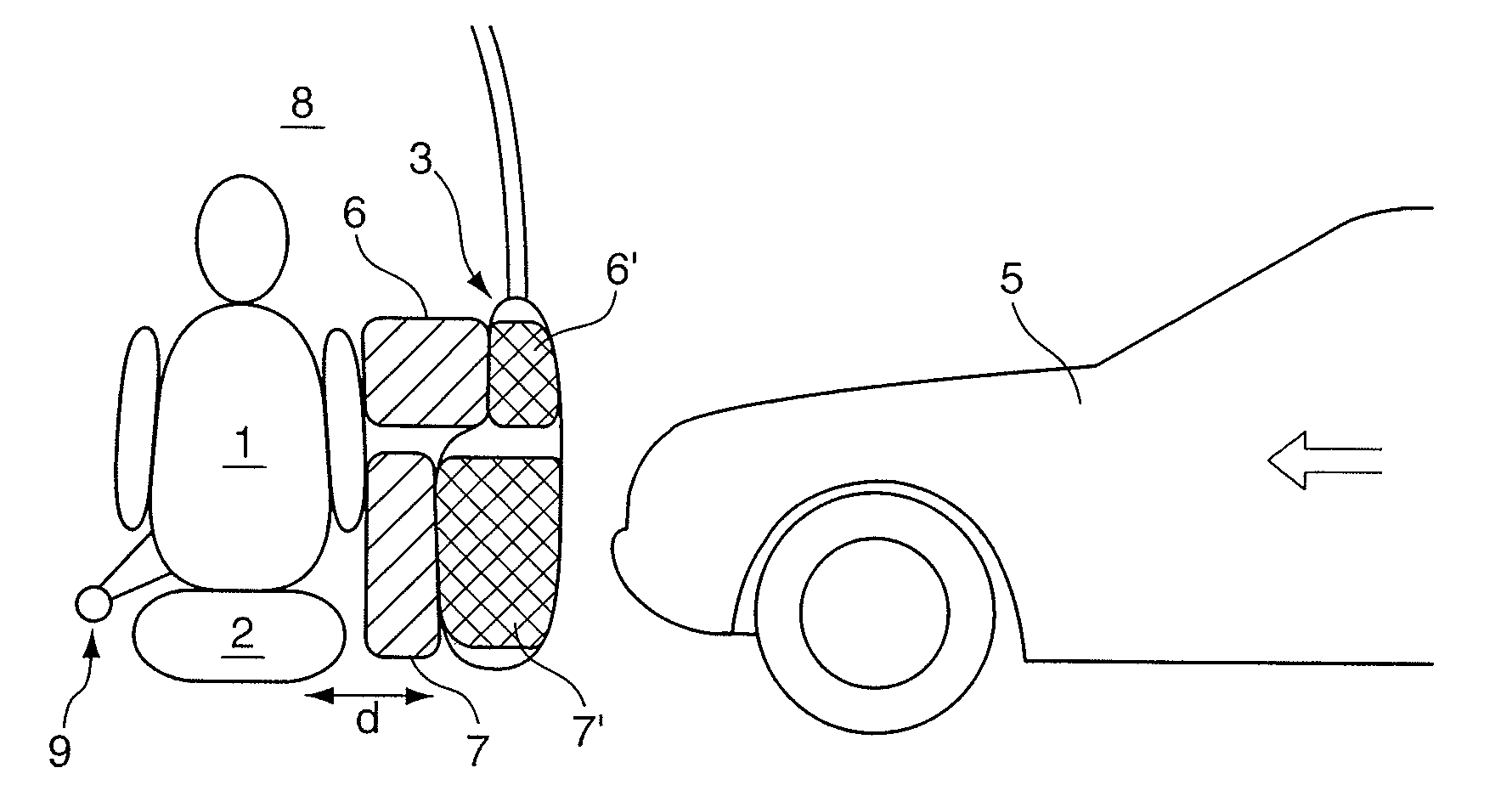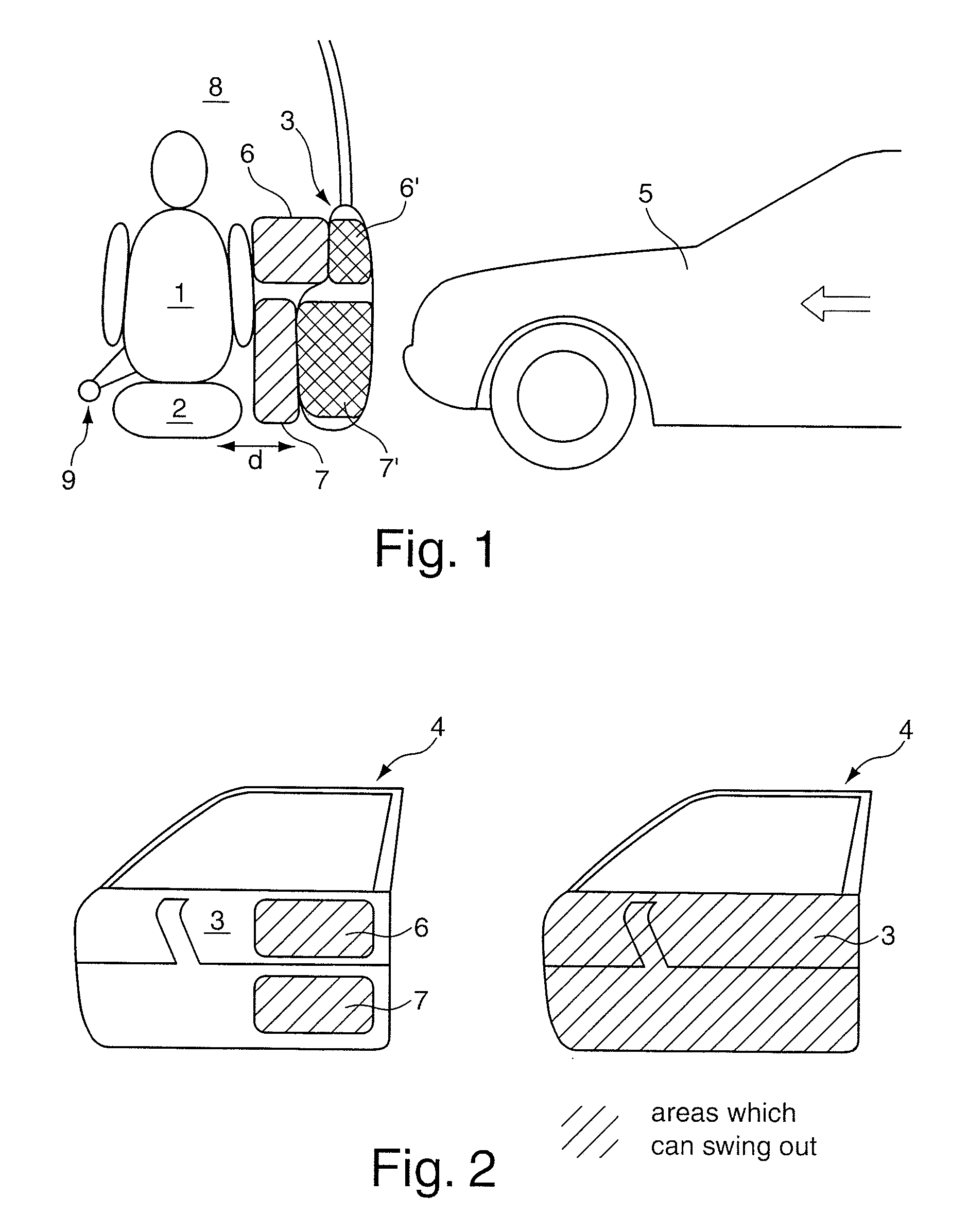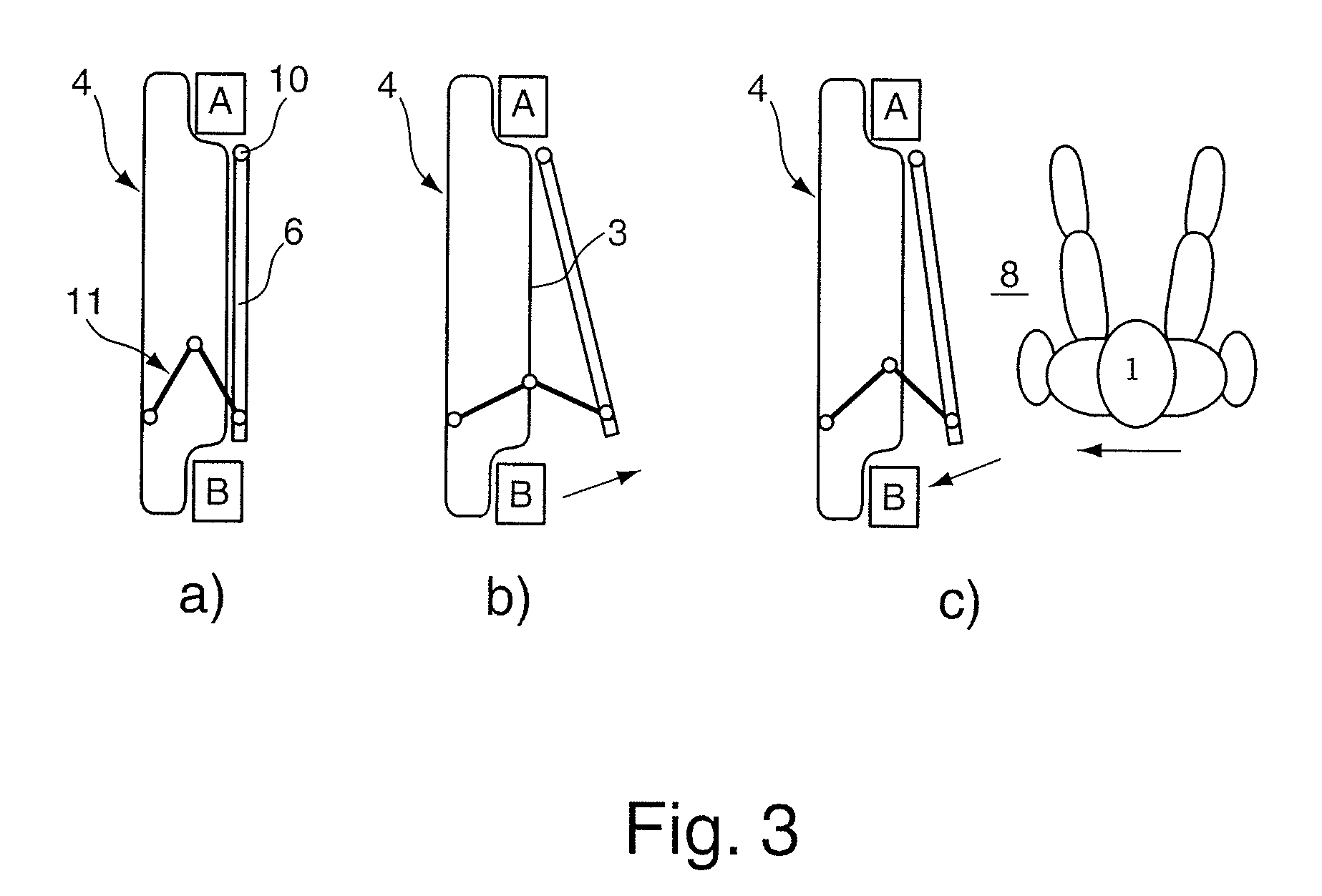[0007]The object of the present invention is to further develop a device for increasing occupant protection in a motor vehicle during a lateral impact in which the energy input acts laterally on a door region of the motor vehicle, with a motor vehicle seat being situated on the side of the motor vehicle door facing away from the energy input, which motor vehicle door side is provided with an interior door lining facing the motor vehicle seat, in such a manner that protection against uncontrolled impact is improved, in particular on the motor vehicle door exposed to collision-based energy input, of a person situated on the motor vehicle seat. Moreover, if possible, the device should be used reversibly.
[0010]The device according to the invented solution is based on the idea to fill the
intermediate space between a person sitting on the motor vehicle seat and the interior door lining as completely as possible so that the dynamic behavior of the person in a crash situation can be influenced. In a lateral impact situation, after inherent body inertness has been overcome, the moment of force acting on the motor vehicle first accelerates the person in the direction of the flow of the collision-based force by the force triggering a motion which the seat-belt
system abruptly stops and, due to the inherent elasticity of the
protection system as well as the inherent elasticity of the person's body, the motion is transformed into a reverse movement in the direction of the motor vehicle door exposed to the energy flow of the lateral impact. The person experiences extreme changing moments of force especially in the head / neck region, which possesses high injury potential. However, a person usually suffers life threatening injuries if he / she hits the side of the motor vehicle door facing the interior of the motor vehicle, which door is deformed, respectively deforms, toward the interior of the motor vehicle as a result of the collision. The invented solution device permits decisively reducing the life threatening injury potential connected with the person hitting the interior wall of the motor vehicle door in that the reverse motion directed in the opposite direction of the collision-based force input described in the preceding is suppressed as much as possible and in particular gently decelerated by using a
transducer material according to the invented solution. A prerequisite for this is actively minimizing the free
intermediate space between the person and the interior lining of the motor vehicle door by means of a
transducer-material-based drive element.
[0012]A preferred combination of the
protection system according to the invented solution with a vehicle-inherent
sensor system which is able to detect an imminent, unavoidable-deemed lateral impact situation permits timely activation of the drive unit and controlled extension related thereto of at least one partial area of the interior door lining even before the crash energy acts on the vehicle. In this manner, the afore-described space between the interior door lining and the person is reduced to a minimum. Even the additional distance to the motor vehicle door due to the reaction time and the elasticity of the seat-belt
system can be minimized by means of corresponding follow-up of the partial area. In this way, a situation is created in which the person, on the one hand, is buffered by the seat-belt
system and, on the other hand, by the at least one extended partial area of the interior door lining.
[0013]In an especially preferred embodiment, two decoupled from each other partial areas of the interior door lining are conveyed into an extended state, one partial area being able to prop up laterally the
pelvis region from one side and the other partial area to prop up the
torso region of the person situated on the motor vehicle seat. Both partial areas are returned to their respective initial positions by the dampening units allocated to them with the same dampening characteristics or varying dampening characteristics adapted to the respective biomechanical stress limits of the corresponding parts of the body by the person's inherent dynamics in such a manner that the person experiences for the most part gentle
cushioning.
[0015]The described device for selected reduction of the life-threatening injury potential to which the occupants of a motor vehicle are exposed in the event of a lateral impact is based on the method principle that is distinguished by at least one region of an
intermediate space between the person sitting on the motor vehicle seat and the interior lining of the door being minimized by the extension of at least one partial area of the interior lining of the door in direction of the interior of the motor vehicle. Furthermore, the object is that the at least one partial area of the interior lining of the door decelerates the person in a dampening manner during or following the collision-based energy input
stemming from the collision-based relative acceleration in the direction of the interior lining of the door. Extension of the at least one partial area of the interior door lining in the direction of the interior of the motor vehicle occurs before the collision-based energy input with the aid of state-of-the-art pre-crash sensors which are preferably laterally attached to the motor vehicle and detect a shortly imminent unavoidable-deemed lateral impact situation. In this case, the drive unit required for extension of at least one partial area of the interior door lining is activated. Translating or rotary movements of the at least one partial area have proven to be advantageous. Use according to the invented solution of transducer materials for extension enables not only extraordinarily quick activation and extension of the partial area but also carrying out the extension in reverse safely, i.e. mis-triggering does not lead to failure of the safety system according to the present invention as is the case with
airbag systems in which the
airbag has to be completely replaced after activation. The safety system's reversible manner of functioning according to the invented solution therefore excuses misinterpretations of the sensor-detected imminent situation, thereby permitting use of less reliable and consequently less expensive sensor systems.
 Login to View More
Login to View More  Login to View More
Login to View More 


